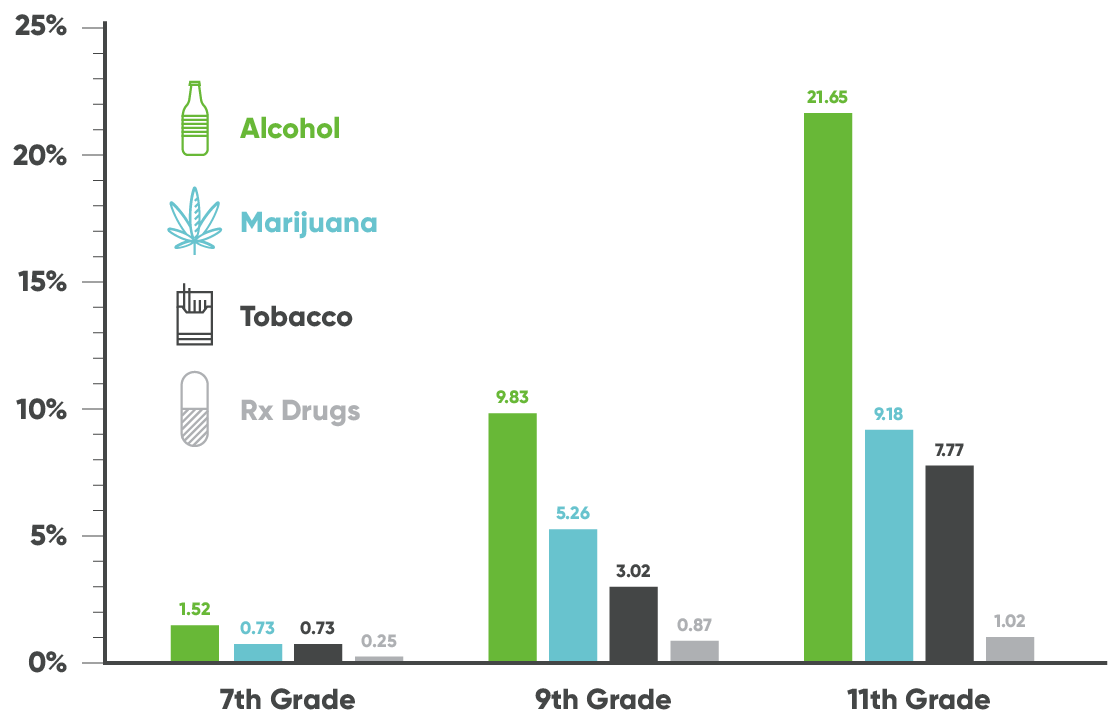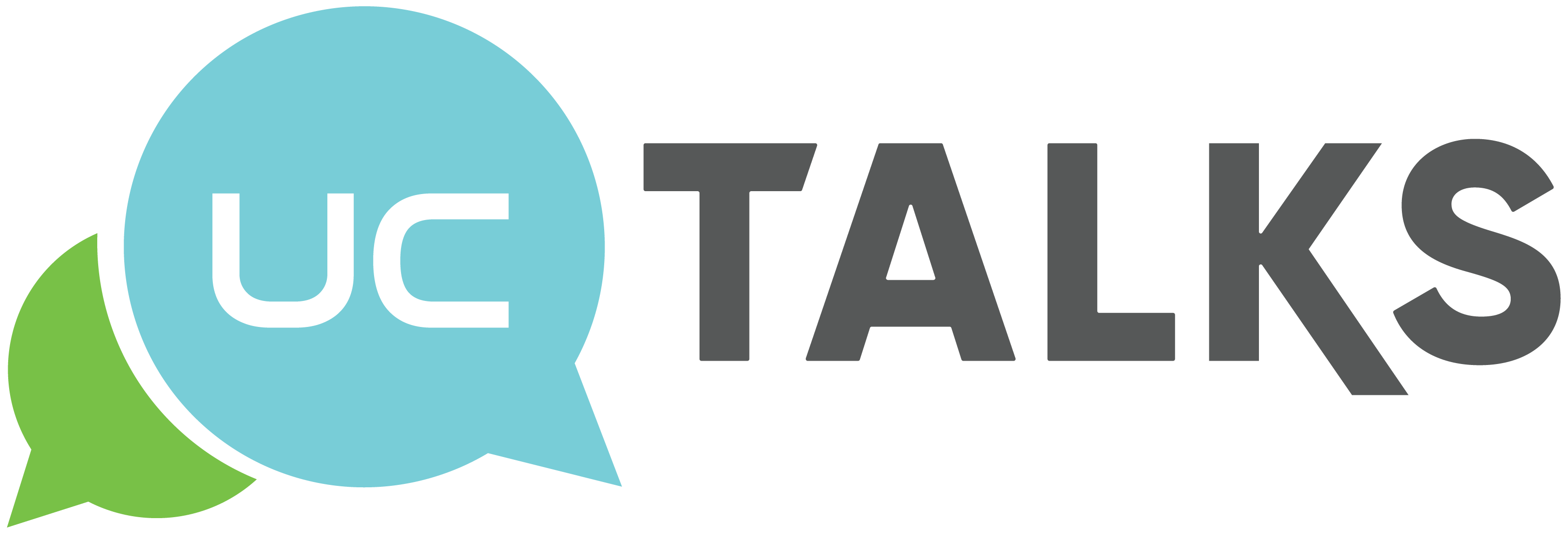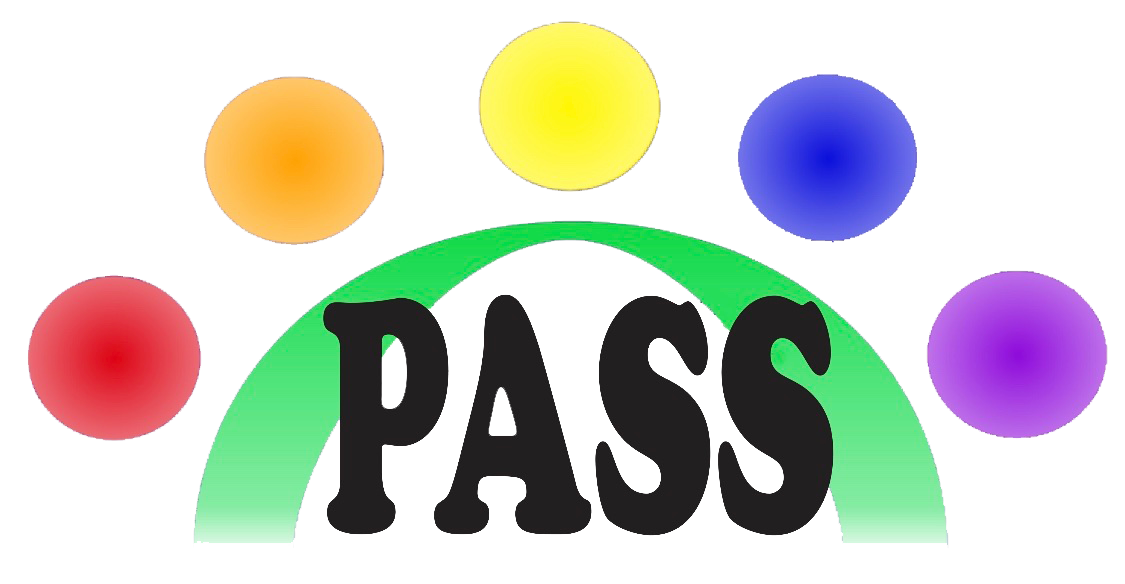Adolescent use of drugs or alcohol is problematic in several ways. Teens tend to use it to a point of intoxication making them prone to health and safety issues. For example, over 90% of college sexual and physical assaults involve alcohol. We also know that early use is more likely to lead to lifelong problems, such as substance use disorder.
Your child needs to know that they can talk to you about what’s happening in their life. Create an environment where your child feels comfortable talking to you about issues they are facing. Your support is an important influence on the decisions they make. Teens need to have clear rules about drug and alcohol use. If they know they are out of bounds, your child is less likely to use them.
The ongoing challenge is to keep our youth safe and to make sure they understand the risks. Use increases as students progress through school. By the 11th grade, 1 in 4 teens report having consumed alcohol in the past month and the popularity of vaping has significantly increased.
Percentage of Union County teens who report past month use (2021):

Source: 2021 Union County Parent Perception Survey
Data represents 1,650 responses from students in grades
7th, 9th, and 11th across all school districts.

- Take opportunities to discuss alcohol and drugs. Discuss the inconsistencies between how substance use is glamorized and the real consequences to consider.
- Always be clear about your family values and expectations. Let them know why underage use is not okay. Be specific in your language. Statements like “be safe,” or “make good choices” leave the decision up to them and their idea of safety. If you expect them to not drink alcohol or use marijuana then say so. Make sure your child is aware of any family history of substance use disorder.
- Listen and guide good choices. Reinforce and praise when they make a choice to not go to an event that may have alcohol or drugs.
- Know the facts. Substance use among youth can impair brain development, negatively impact academic and athletic performance, and increas the likelihood of getting into a car crash, fight or having unwanted sex.
- Set a good example. Adults and teens alike experience tough choices when it comes to substance use. Talk over strategies to avoid risky behavior such as binge drinking or misusing medications.
CONVERSATION STARTERS
The Dangers of Fentanyl
- Teen athletes have an increased risk of injury. When athletes are prescribed pain medication after an injury or surgery, they may receive opioids, which can be misused if not monitored carefully.
- Criminal drug networks are mass-producing fake pills and falsely marketing them as legitimate prescription pills to deceive the American public.
- Fake pills are easy to purchase, widely available, often contain fentanyl or methamphetamine, and can be deadly.
- Fake prescription pills are easily accessible and often sold on social media and e-commerce platforms, making them available to anyone with a smartphone, including minors.
- Many fake pills are made to look like prescription opioids such as oxycodone (Oxycontin®, Percocet®), hydrocodone (Vicodin®), and alprazolam (Xanax®); or stimulants like amphetamines (Adderall®).
ONE PILL CAN KILL
The Union County Drug-Free Coalition is warning residents that fentanyl is dangerous and even deadly in small amounts. The organization reports that there has been an increase in fentanyl overdoses in the county and that the drug is being mixed with all sorts of street drugs, not just opiates. This is extremely dangerous, as fentanyl is much more potent than other drugs and can easily lead to an overdose.
We urge residents to be aware of the dangers of fentanyl and to avoid taking any drugs that may be contaminated with it. The federal Drug Enforcement Administration recently issued a warning that prescription pills bought online or off the street are also being laced with fentanyl. The DEA urges people to only use prescription pills that have been prescribed to them by a licensed healthcare provider and picked up at a licensed pharmacy.
Fentanyl is a powerful synthetic opioid that is 50-100 times more potent than morphine. It is often used to cut other drugs because it is so inexpensive and increases the potency of the drug. However, this also makes it much more dangerous, as even a small amount can be deadly. If you suspect that your pills have been laced with fentanyl, do not take them. Contact your healthcare provider or local law enforcement immediately.
Know TheFacts – Pills & Street Names
(Valium®, Xanax®, Restoril®, Ativan®, Klonopin®)
Depressants that produce sedation, induce sleep, relieve anxiety and prevent seizures. Available in prescription pills, syrup and injectable preparation.
(OxyContin®, Tylox®, and Percodan®)
Prescribed for pain
(Adderall®, Concerta®, Dexedrine®, Focalin®, Metadate®, Methylin®, Ritalin®)
Prescription stimulants used to treat Attention-Deficit / Hyperactivity Disorder (ADHD).
Impact of Substance Use on Health and Safety
IMPACT OF SUBSTANCE USE ON YOUR CHILD
- Alters brain development
- Reduces the ability to learn, plan, and make decisions
- Impairs athletic performance and risks eligibility
- Increases risk for unwanted sexual encounters and their consequences
- Impacts relationships with others
AVOID THE OUTCOMES
Research has shown that the developing brain and the abuse of drugs is a bad combination. Heavy use early on is shown to cause the development of substance use disorder. Being impaired by drug use can lead to: Driving crashes, accidents, fights, unwanted sexual encounters, passing out, and death. Studies also show that these products bring about mood changes, reduce inhibitions, alter one’s experience of reality, and have a negative impact on memory retention and coordination.
“The cost of underage drinking can extend far beyond legal consequences. Alcohol will have a major effect on your teen and can interfere with important milestones including his or her ability to drive, have a healthy relationship, get accepted to college, or find a good job.”
Preventative Strategies
3-7 YEARS
Medication safety is a great place to start. Talk about the difference between vitamins, candy, and medications.
8-12 YEARS
Talk about ads, party culture, product promotion, current events, explore the disconnect between what is popularized and the realities of use.
13-19 YEARS
Practice resistance skills, discuss the risks and consequences, and establish an escape for risky situations.
YOUNG ADULTS
Protect your reputation, young adults are now responsible for the consequences use may have on academics, work, relationships, as well as legal issues.
What’s Being Discussed in Schools?
Specifics on Drugs of Abuse
ALCOHOL
Teens often drink with the intention of getting drunk. Female students are now drinking as much as their male counterparts.
MARIJUANA
Marijuana is available in many different forms popular among younger people such as vape pods, gummies, suckers, and other edibles. Some contain up to 80% THC.
VAPING
A typical vape cartridge has as much nicotine as up to 20 cigarettes. Marijuana can also be vaped.
MEDICATIONS
Make sure your child understands the risks. Monitor and safeguard your medications. Dispose of unused prescriptions and expired over-the-counter drugs.
Warning Signs of Drugs and Alcohol
WHAT PARENTS CAN LOOK FOR
- Loss of interest in usual activities
- Changes in grades, school or sport performance
- Changes in friend groups
- Acting aggressively or being withdrawn
- Changes in sleep patterns
- Secretive
- Increase in risky behavior
- Changes in physical appearance/hygiene
- Environmental and behavioral risk factors
- Family history
What If I Find Something?
WHAT TO DO IF YOU FIND SOMETHING
- Expect anger
- Give yourself an hour or so before addressing the situation with your child
- Write down questions and ask questions instead of making statements or assumptions
- Remain nonjudgmental – You want to hear their side
- Control your emotions
- Scare tactics don’t work
- Listen nonjudgmentally
- Monitor their spaces (room, car, social media) for additional signs of use




